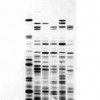DNA Interactive

Lighting-Up Landmines
Dec 7th
Engineering students at Edinburgh University have created bacteria that can be used to detect landmines! The cheaply engineered bacteria can be mixed into a colorless fluid which would be sprayed over suspect soil. Chemicals that leak out of old landmines stimulate the bacteria to make a green protein, producing large patches of bright green where bacteria encounter explosive material.
According to the United Nations, between 15,000 and 20,000 people are injured or killed by landmines that litter more than 80 countries including Sudan, Somalia, Iraq, and Afghanistan. The bacteria would likely fail to identify those mines that do not leak, and would detect More >

Forensics in the classroom
Nov 23rd
It is important as teachers to incorporate subject matter that is of interest to your students. This will get them more excited about the process of learning. Recently, I have seen an ever growing interest in forensic science, with the help of the media. This offers valuable teaching opportunities. Almost every student that I have encountered has seen at least one episode of CSI or Law & Order.
So how can you take this material from the television screen into the classroom? Using the applications of DNA testing alone can provide you with a wide range of lessons, including the use of DNA More >

The new "oldest" member to our hominid family tree
Nov 9th
During an anthropological expedition in 1992 to the Middle Awash river valley in Ethiopia, a research team led by Tim White uncovered a fascinating, previously unknown fossil Hominid. In 1994, the fossil was named Ardipithecus ramidus. In the Afar language, “Ardi” means ground floor and “ramid” means root.
Affectionately known as “Ardi”, some of her features were distinctive. Due to her location in the ancient Ethiopian strata, she was dated to 4.4 million years ago, pre-dating “Lucy” (Australopithecus afarensis) by over a million years. Her brain size was much smaller than Lucy’s but was similar to that of a modern chimpanzee. More >
Who’s My Other Mommy?
Oct 26th
Fraternal Rhesus Macaque twins, Mito and Tracker, have two different DNA mommies: their mother’s chromosomal DNA was injected into enucleated egg cells belonging to another Rhesus monkey female prior to fertilization. The eggs were fertilized, in vitro, with donor sperm and implanted in yet another female who carried the healthy twins to term.
The nucleus, where chromosomal DNA is stored and protected, is not the only source of DNA in a mammalian cell. Mitochondria have their own 16,569 bp genomes encoding 37 genes involved in the production of biological energy, ATP. Mutations in these genes have been linked with human diseases More >

Pharmacowhat? Pharmacogenetics!
Oct 15th
Your genes affect not only how you look and your predisposition to disease, but it would appear that they also affect your responsiveness to different drug treatments following disease onset.
In the emerging field of pharmacogenetics, scientists study genome variations and correlate them with drug treatment response. For example, variations (also called polymorphisms) in genes encoding enzymes involved in drug metabolism have been found to affect the activation, deactivation, and toxicity of drugs used to treat cancer, heart disease, and psychiatric disorders. Recently, scientists found that DNA sequence can also be used to predict responsiveness to current Hepatitis C treatment (a More >

The Future of Medicine
Oct 13th
Emerging DNA technologies continue to offer us many new insights into our genome, and its implications on human disease. One area that is currently under much scrutiny is how different patients are responding differently to certain drug treatments. Researchers are now finding that some people have a genetic predisposition to how they will react to a drug. If there is some way that we could detect this in the doctor’s office as they are writing the prescription, it would help save time and lives as we try to combat these diseases.
The Imperial College London and its affiliate-company DNA Electronics have More >

Shouldn’t you be a girl? The male calico cat syndrome
Sep 28th
For all the cat lovers out there, cats come in many colors. Two basic pigments to be discussed here are orange and black. There is one curious, rule for cats with patches of orange and black; they are all supposed to be female. The genetics behind this fact is as interesting as the phenomenon itself.
Chromosomes are passed from parent to child. For many animals, including us, the X and Y chromosomes determine gender. For most mammals, the presence of two X chromosomes indicates a female, while the presence of one X and one Y chromosome indicates a male. For a More >

Chikafrogonewtasaurus
Sep 4th
Being an educator at the DNALC does not mean that everything has to be all “DNA”! Sometimes, it’s all about proteins. My background is in ecology and evolution, with a particular bent towards dinosaurs. In 2005, dinosaur paleontologists decided to slice the leg bone of a 68 million year old Tyrannosaurus rex, just to see what it looked like inside. They were in for a surprise. There were remnants of soft tissue – still present after 68 million years!!
In 2007, they were able to identify and compare seven protein sequences. Three of these proteins seemed to be closely related to chickens. More >

DNA Authentication
Sep 2nd
While recent advances in DNA technology have revolutionized the field of forensic science, it also makes us question whether or not the evidence at a crime scene is genuine. Basic techniques such as PCR, molecular cloning, and the most recent whole genome amplification, allow for someone to synthesize DNA under any genetic profile in vitro. This artificial DNA can then be implanted into human tissues or placed on the surface of objects, and planted at a crime scene. Current forensic procedure cannot distinguish between artificial and natural DNA samples.
The company Nucleix is now offering a tool to distinguish between natural and More >
